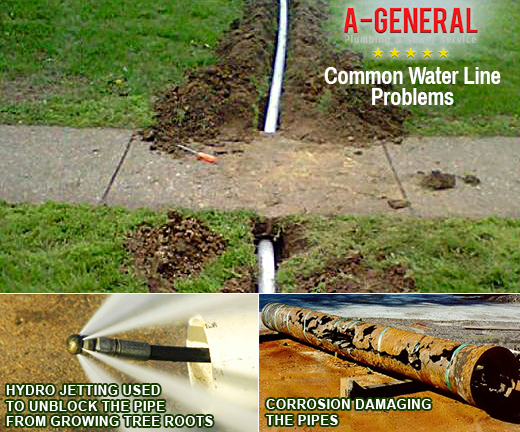Introduction:

Image: www.hobbyfarms.com
Whether you’re a homeowner planning a renovation project or a professional plumber seeking an efficient method to locate water lines, knowing how to find these hidden pipes is crucial. A clear understanding of water line identification can save you both time and money. This detailed guide will provide you with an array of effective methods to help you pinpoint water lines buried beneath your home.
Section 1: Visual Inspection
The initial step in locating water lines is to perform a comprehensive visual inspection. Begin by checking plumbing fixtures such as sinks, toilets, and showers for telltale signs of water lines. These fixtures often have access panels that can provide a glimpse into the surrounding plumbing system. Additionally, examine the walls and floors around these fixtures, as water lines typically run along these surfaces.
Section 2: Listening for Running Water
Sometimes, visual clues are not apparent. In these cases, listening for running water can be an effective strategy. Turn on all faucets in the house and listen for the sound of flowing water. The louder the sound, the closer you are to the water line. Use a stethoscope to amplify the sound and pinpoint the line’s exact location.
Section 3: Using a Water Line Detector
Water line detectors are specialized electronic devices that emit a signal which is then picked up by a receiver wand. By moving the receiver along walls and floors, you can detect the presence of a water line. It is important to follow the manufacturer’s instructions for optimal results.
Section 4: Checking Building Plans
If you have access to the original building plans or blueprints, they may provide valuable information about the location of water lines. These plans typically include detailed schematics showing the layout of the plumbing system. However, be aware that building plans are not always accurate and may not reflect any subsequent renovations or modifications.
Section 5: Utilizing Thermal Imaging
Thermal imaging cameras can detect the temperature difference between the water flowing through the lines and the surrounding environment. By scanning walls and floors with the camera, you can identify areas where the water lines are located. Thermal imaging is particularly useful when dealing with buried lines that are not readily accessible.
Section 6: Ground Penetrating Radar (GPR)
Ground penetrating radar (GPR) is an advanced technology that utilizes electromagnetic waves to create a detailed image of what lies beneath the ground. GPR is capable of detecting water lines made of various materials, including plastic, copper, and concrete. However, GPR equipment can be costly and requires specialized training to operate effectively.
Section 7: Hydrostatic Pressure Testing
This method involves temporarily increasing the water pressure in the plumbing system to identify leaks, which can then be traced back to the damaged line. However, hydrostatic pressure testing should only be performed by trained and experienced professionals.
Conclusion:
Locating water lines is an essential skill for both homeowners and plumbers alike. By implementing the effective methods outlined in this article, you can uncover hidden pipes with precision and ease. Remember to prioritize safety and consult with a professional plumber if you encounter any difficulties or suspect a water line issue. With a comprehensive understanding of water line identification techniques, you can ensure proper maintenance, repair, and renovation of your plumbing system.

Image: www.a-general.com
How To Find Water Lines